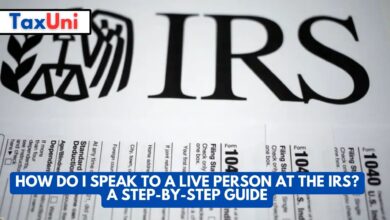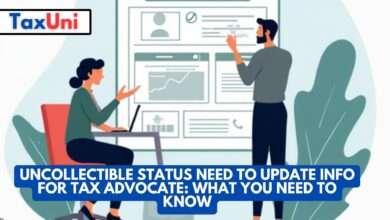W9 Form
Understanding the purpose and significance of the IRS W-9 Form is essential for maintaining financial transparency and fulfilling your tax obligations.

Contents
- Who Needs to Use the W-9 Form?
- What Information Does the W-9 Form Collect?
- When to File the W-9 Form?
- What Happens If I Include False Information on the W-9 Form?
- Consequences of Inaccurate W-9 Form Completion
- Filing Tips
- FAQ
- Q: What is the W-9 Form used for?
- Q: Who is required to fill out a W-9 Form?
- Q: When should I fill out a W-9 Form?
- Q: How do I fill out a W-9 Form?
- Q: What happens if I don’t fill out a W-9 Form?
- Q: Can I change my W-9 Form after I submit it?
- Q: What are the penalties for not filling out a W-9 Form or not filling it out correctly?
- Q: How can I make sure that the correct amount of tax is being withheld from my payments?
The W-9 Form, officially known as the Request for Taxpayer Identification Number and Certification, stands as a crucial document that facilitates accurate tax reporting. This form is widely used by businesses to collect essential information from independent contractors, freelancers, and other vendors who they engage in business transactions worth $600 or more during a calendar year.
Who Needs to Use the W-9 Form?
Businesses are primarily responsible for issuing and collecting W-9 Forms from individuals and entities that fall under the following categories:
- Independent Contractors: Individuals who provide services to a business in a non-employee capacity are considered independent contractors.
- Freelancers: Self-employed individuals who offer their services to multiple clients on a freelance basis are also required to submit a W-9 Form.
- Vendors: Businesses that purchase goods or services from other businesses must collect W-9 Forms from those vendors.

What Information Does the W-9 Form Collect?
The W-9 Form gathers key information necessary for accurate tax reporting, including:
Taxpayer Name and Address: The individual or entity’s legal name and address are essential for identifying the taxpayer.
Employer Identification Number (EIN): If the taxpayer has an EIN, it should be provided on the form.
Social Security Number (SSN) or Individual Taxpayer Identification Number (ITIN): If the taxpayer does not have an EIN, they must provide their SSN or ITIN.
Tax Classification: The taxpayer’s tax classification, such as sole proprietor, partnership, or corporation, is crucial for determining tax treatment.
- Exemption from Backup Withholding: If the taxpayer is exempt from backup withholding, they must check the appropriate box on the form.
- Signature and Date: The taxpayer must sign and date the form to certify the accuracy of the information provided.
When to File the W-9 Form?
Businesses should typically issue W-9 Forms to new independent contractors, freelancers, or vendors before making the first payment for services rendered. This ensures that the business has the necessary information to file accurate tax returns.

What Happens If I Include False Information on the W-9 Form?
Accurately completing the W-9 Form is crucial for both businesses and individuals:
- Businesses: W-9 Forms help businesses avoid penalties for failing to report payments to independent contractors and ensure proper tax withholding for employees.
- Individuals: W-9 Forms ensure that individuals receive proper tax forms, such as Form 1099-MISC, for reporting their income correctly.
Consequences of Inaccurate W-9 Form Completion
Inaccurate W-9 Forms can lead to various consequences, including:
- Delays in Tax Processing: Errors on W-9 Forms can delay the processing of tax returns and result in penalties for both businesses and individuals.
- Potential Audits: Inaccurate W-9 Forms may trigger IRS audits for businesses, leading to additional scrutiny and potential penalties.
- for Individuals: Incorrect information on W-9 Forms can affect an individual’s tax liability and result in underpayment or overpayment of taxes.
Filing Tips
To ensure accuracy, businesses and individuals should follow these guidelines:
- Verify Taxpayer Information: Businesses should verify the taxpayer’s name, address, and tax identification number (EIN, SSN, or ITIN) against IRS records.
- Review Tax Classification: Ensure that the taxpayer’s tax classification is accurately indicated on the form.
- Address Changes: Individuals should promptly notify businesses of any changes in their name, address, or tax identification number.

FAQ
Q: What is the W-9 Form used for?
A: The W-9 Form, officially known as the Request for Taxpayer Identification Number and Certification, is a document used by businesses to collect essential information from individuals or entities to whom they make payments of $600 or more during a calendar year. This information is necessary for accurate tax reporting and ensuring compliance with IRS regulations.
Q: Who is required to fill out a W-9 Form?
A: Individuals and entities who receive payments of $600 or more from businesses are required to fill out a W-9 Form. This includes independent contractors, freelancers, vendors, and anyone else who provides services or goods to businesses.
Q: When should I fill out a W-9 Form?
A: You should fill out a W-9 Form before receiving any business payments. This will ensure that the business has the necessary information to file accurate tax returns and issue you the correct tax forms.
Q: How do I fill out a W-9 Form?
A: You can find a W-9 Form on the IRS website or request one from the business that is making payments to you. The form is relatively straightforward to fill out. You will need to provide your name, address, tax identification number (EIN, SSN, or ITIN), and tax classification.
Q: What happens if I don’t fill out a W-9 Form?
A: If you do not fill out a W-9 Form, the business may withhold 28% of your payments for federal taxes. This is known as backup withholding. You may also be subject to penalties from the IRS.
Q: Can I change my W-9 Form after I submit it?
A: Yes, you can change your W-9 Form at any time. You should notify the business that you are making changes to your form as soon as possible.
Q: What are the penalties for not filling out a W-9 Form or not filling it out correctly?
A: The penalties for not filling out a W-9 Form or not filling it out correctly can be significant. Businesses may be fined for failing to collect W-9 Forms from their vendors, and individuals may be penalized for failing to provide accurate information on their W-9 Forms.
Q: How can I make sure that the correct amount of tax is being withheld from my payments?
A: The best way to make sure that the correct amount of tax is being withheld from your payments is to review your W-9 Form annually and make changes as needed. You can also use the IRS Withholding Estimator tool to estimate the appropriate withholding amount for your circumstances.





